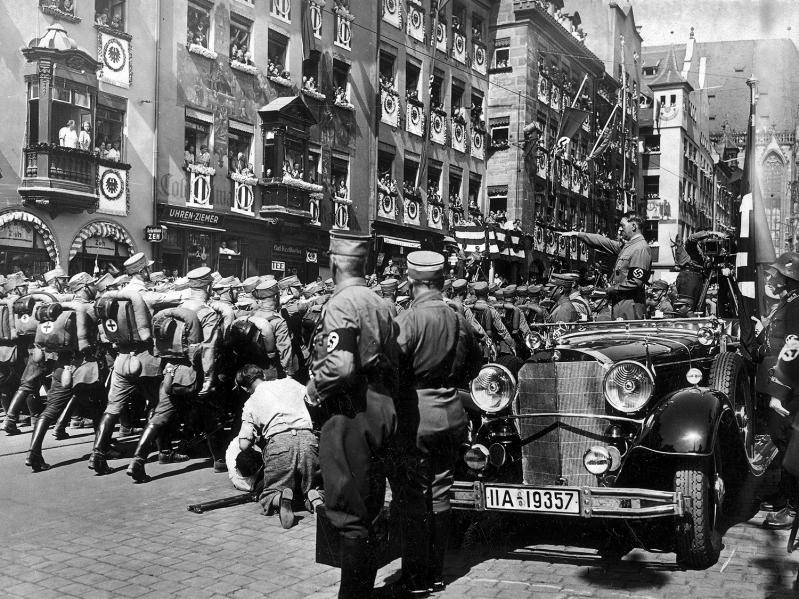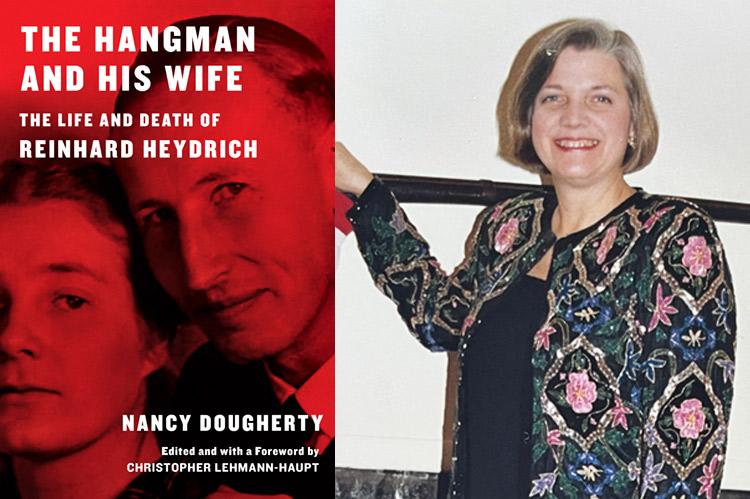“The Hangman and His Wife”
Nancy Dougherty
Knopf, $40
"The Hangman and His Wife" is a lengthy and detailed investigation into the nature of Nazi evil seen mainly through the life and career of Reinhard Heydrich, Heinrich Himmler's chief assistant, who was, "in fact, the puppet master of the Third Reich." It seems that Nancy Dougherty, an academically trained historian, wanted to discover — through this biography — how a person, and by extension persons, can descend to such depths of depravity.
There could be two kinds of answers to this question: nurture, through the special conditions of post-World War I Germany, and in response to them, the rise of Nazi ideology, or nature, that is to say that in order to arrive at such personal evil there must first be a seed from which nurture can grow the evil. Was Heydrich a special case or an archetype of human villainy?
Aleksandr Solzhenitsyn wrote in "The Gulag Archipelago, 1918-1956": "If only it were so simple! If only there were evil people somewhere insidiously committing evil deeds, and it were necessary only to separate them from the rest of us and destroy them. But the line dividing good and evil cuts through the heart of every human being. And who is willing to destroy a piece of his own heart?"
Of course, there were many evil Nazis, and as her narrative unfolds, Ms. Dougherty provides thumbnail sketches of many of Heydrich's SS collaborators, starting, of course, with Hitler himself: Hermann Goring, Karl Wolff, Himmler, Adolf Eichmann, Alfred Naujocks, Walter Schellenberg, etc. One of the striking things about this list is the youth of these perpetrators of evil, including the subject: They were all young, mostly in their early 30s, young children during World War I and adolescents during the chaotic postwar crisis in Germany.

National Digital Archives of Poland
"Heydrich and Himmler were . . . political rebels in the classic Nazi mode. Because both had been misfits in their youth, they didn't want the old order back, they wanted a new order, in which they could at last dominate." Throughout, they were a team; Himmler was the idea man, and Heydrich the organizer who put his superior's inventions into action.
We have a physical description of Reinhard Heydrich from Bella Fromm, a German journalist who published a book titled "Blood and Banquets" in 1943. After meeting him at a gala reception, she wrote, "Heydrich is known as Himmler's bloodiest man. He is six feet tall, lean, trim, yellow haired. . . . His appearance is ascetic, and he rarely, if ever, smiles. They say he is the brains of the Gestapo, merciless, brutal, despotic, and has more power than his master, Himmler. . . . He is also known as the hangman. . . ."
We get a corroborating image from one of his deputies in the SS: "a tall, impressive figure with a broad, unusually high forehead [and] small restless eyes as crafty as an animal's and of uncanny power." Accordingly, he was frequently described as the physical embodiment of the Aryan ideal. Ms. Dougherty quotes a writer who said, "If National Socialism had looked in the mirror, Reinhard Heydrich would have looked back."
Ironically, Heydrich is one of the least-known senior Nazis, and that is because he was assassinated in 1942 and so did not go to trial at Nuremberg.
Himmler and Heydrich had diametrically opposite characters. "Himmler had such negative charisma that almost none of his early staff stayed with him," whereas Heydrich was a very successful recruiter of men to do his monstrous business. He "was almost terrifyingly seductive" and purposefully went after "bright sons of ruined families, struggling to find a place in the world [who] were particularly vulnerable to the special combination of cunning, intelligence, and aggressive, almost feral energy that now made up Heydrich's persona."
How, asks Ms. Dougherty, did this man live with himself? She writes that "As 'political soldiers,' SS men were supposed to embody the twin ideals of Nazi fanaticism and knightly honor. Never mind that every year these became harder to reconcile; every year they tried harder to believe that some men — Aryan supermen — can serve two masters. The seeds of confusion, compartmentalization, and duplicity were thus embedded in the very heart of the SS ethos."
In Solzhenitsyn's terms, they tried to destroy a piece of their own hearts. Heydrich once told his wife that he regarded his work as "something like a great personal sacrifice," adding, "I feel myself free of all guilt."
Ms. Dougherty writes that he was "expressing a widespread yearning among SS men to merge their responsibility with that of the larger community. That way, they could see themselves as agents of the whole, absolved from personal connection to the orders they executed."
The Final Solution to the Jewish question evolved over time as the Nazis ran out of ideas for how to get rid of them. In October 1940 Hitler gave the order that "Jews, Poles, and similar trash were to be cleared from the old Reich and its conquered territories." But once the invasion of Russia began in June 1941, Hitler decided that the only way to solve the problem was to exterminate the Jews.
The now-famous Wannsee Conference to address this directive was hosted by Heydrich on Jan. 20, 1942, at which he gave detailed estimates of the number of Jews in every country of Europe and the U.S.S.R. But this conference was not the starting point of the Holocaust, but perhaps its official institution. Goring had already sent Heydrich a mandate the preceding July "to carry out all necessary preparations with regard to organizational, substantive, and financial viewpoints for a total solution of the Jewish Question in the German sphere of influence in Europe."
Heydrich's "Einsatzgruppen . . . murdered approximately 100,000 people every month between June 21, 1941, and December of that year . . . a transitional stage of great historical significance between 'normal' atrocities of war and the radical species of killing we now call genocide. To study Heydrich's Einsatzgruppen is to observe the Nazi system sliding over the abyss into unprecedented evil."
What lessons can we take away from this history? Is it not worth remembering that Hitler wrote in "Mein Kampf" (published in 1925) that if one tells a "big lie" frequently enough, it will eventually be believed? Ms. Dougherty reminds us that at the time Hitler was first elected (1933), "the Nazis and the Communists were almost evenly matched. . . . It is a sad, old story repeated in the natural history of countless revolutions: while the moderates hesitate, the extremists define things."
When power becomes all, ends can justify means, however evil.
Postscript: Although this volume is titled "The Hangman and His Wife," the references to Lina Heydrich are of limited interest. She is cited because the author interviewed her several times before her death in 1985. Lina herself wrote a memoir titled "Life With a War Criminal," which is mostly about trying to get out from under the shadow of her life with Reinhard Heydrich.
Ana Daniel taught modern European history at Southampton College. She lives in Bridgehampton.
Nancy Dougherty lived on Shelter Island. She died in 2013.

